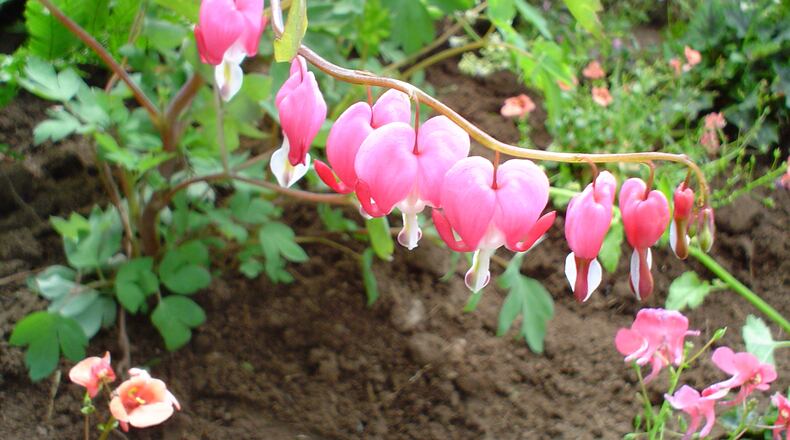The bleeding heart I knew in horticulture is native to China, where it was taken from the mountains and planted in gardens early on. It did not come west until Robert Fortune gathered one from a mandarin’s garden around 1850, and sent it to Kew. The Victorian rage for anything sentimental made the heart-shaped flowers wildly popular in gardens. Naturally this was shared in America, where division made them easy to multiply.
Since then it has become a beloved plant, with sentimentally shaped flowers appealing to just about everyone. The long sprays of dangling magenta hearts on thin wands are charming as they bob and sway in the breeze, although it’s not a wind-tolerant plant. It is, however, the best choice for spring beauty around large shade trees where ferns and sedges thrive.
The results of European breeding have resulted in superior varieties. The long-time garden favorite is the variety ‘Luxuriant,’ which is a big beautiful plant widely used by the landscape industry. That means it’s proven to not have terminal problems in the future.
The Dutch have been breeding Dicentras for some time now, seeking hybrid variations in the plants to start a new named form. Many are the results of crossing Dicentra spectabilis (Zone 3) with Dicentra formosa. Others are the result of crossing their offspring. This intensifies the genes that hail from two different continents separated by the Pacific. It is also remarkable that both species evolved separately to become so similar. This makes it possible for the dominant drought-resistant genes of the native to be more easily transferred on to the next hybrid generation.
The roadside plant in alluvial deposits is not typical for Dicentras. They live in a woodland environment where there is a porous duff layer on top of the soil. Feeder roots grow active with the first winter rains in California, drawing nutrition from decomposition at the soil surface. In gardens, create a similar condition with mulch for surface rooting and water conservation.
Use bleeding heart as a problem solver. Bring color to barren side yard views along with very early bulbs. Plant them around your coast redwoods to share their natural duff. It’s traditional in China to plant bleeding hearts in conjunction with rock work, perhaps because they are found in the wild in such associations.
In times of drought, consider growing native Dicentra formosa for a beautiful plant that thrives during the rainy season, then dies back to the ground for heat of fall. Nothing is better protected during wildfire season than roots insulated by earth. The species may be difficult to find, but it’s worth the hunt. You’ll agree when such delicate beauty jumps out of winter with hearts and flowers to announce the arrival of a drier than average spring.
———
Maureen Gilmer is an author, horticulturist and landscape designer. Learn more at www.MoPlants.com
About the Author
